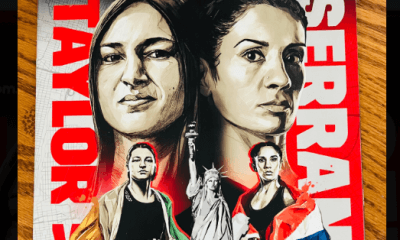Featured Articles
Expect the Blood to Flow When Josesito Lopez Meets John Molina on Saturday
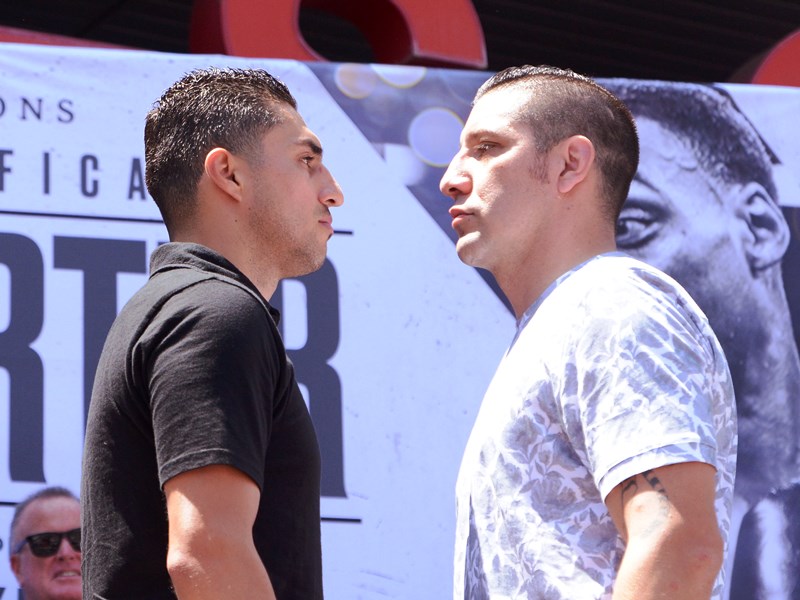
On Saturday, two Southern California prizefighters with similar journeys finally intersect when Riverside’s Josesito “Riverside Rocky” Lopez (36-8, 19 KOs) clashes with John “The Gladiator” Molina Jr. (30-8, 24 KOs) in a 10-round welterweight clash at Staples Center in Los Angeles. The bout will be televised on FOX pay-per-view. Expect the blood to flow.
“Me and Josesito are both guys who took tough roads to get here and the fans love us because of what we always put into the ring. We leave everything in there and that’s why the fans know this fight is going to be one to remember,” said Molina, 36.
For years both have been considered the most amiable and likeable pugilists in the boxing world until they step inside the ropes. Both are known for their rugged styles.
“I don’t underestimate John Molina Jr. I’ve seen him a lot throughout the years, just like I’m sure he’s seen me,” said Lopez, 35, whose hometown Riverside is within 20 miles from Molina’s hometown Covina. “We know each other quite well, so the fans are in for a good one. We’ve both proven we have the heart and the will, now we have to prove it against each other.”
Decades ago Lopez was a rail-thin determined athlete known for never giving up. His cross country running background seemed to help his boxing and he never cared who he fought just as long as he could fight.
Molina was a completely different story. He was a wrestler in high school and it was after graduating from high school that he tried boxing. He still harbored a wrestling stance and a hard nose attitude but he could always punch.
Josesito and Valero
The first time Lopez fought in a prize ring he was matched tough against Allen Litzau, the older brother of sterling prospect Jason Litzau. The Top Rank fight card took place in Las Vegas and in the first round Lopez opened up with both guns and took Litzau out of there. Despite the win, Top Rank showed no interest in Lopez.
By 2009 it was pretty apparent to anyone in Southern California that Lopez was a gritty fighter with a slightly awkward style. But plain and simple he was a pure fighter. Around this time Lopez was one of multiple boxers asked to travel to an Orange County boxing gym to provide sparring for a powerful and speedy Venezuelan fighter named Edwin Valero.
About 10 boxers showed up early at a Costa Mesa boxing gym as Valero and his trainer at the time Robert Alcazar lined up the sparring partners. In a remarkable display of power Valero knocked out six successive opponents in the sparring session. One by one they entered the boxing ring and one by one they were carried out. In my more than 30 years of covering boxing I had never seen anything like it.
Finally, they decided to put Riverside’s Lopez in the ring with Valero. Though the left-handed assassin attacked Lopez like he had attacked the others, the thin Riverside boxer lasted the entire round. Valero didn’t show any emotion or disappointment. Lopez proceeded to spar with Valero another eight or nine rounds. He was never knocked down by Valero whose entire career was 27 wins and 27 knockouts. He was arrested a year later for murdering his wife and subsequently found dead in his jail cell in April 2010.
Making of Riverside Rocky
In 2011, Lopez met Mike Dallas Jr. in a battle for the vacant NABF lightweight title. He walked away with a knockout win in the seventh to earn a televised clash with an undefeated Las Vegas-based fighter.
Jessie Vargas was the local fighter when he clashed with Lopez in a welterweight match at the MGM Grand in Las Vegas. It was on the undercard of a Floyd Mayweather fight versus Victor Ortiz for the welterweight world title on September 17, 2011. Once again Lopez was the victim of hometown scoring, though it was an extremely close fight. He lost by split decision to Vargas.
It was the third time a Las Vegas fighter would beat Lopez by decision in Las Vegas.
A match between Lopez and Victor Ortiz was proposed when original foe Andre Berto tested positive for PEDs. Ortiz had just lost the world title to Mayweather and was looking to regain footing with a rematch with Berto. When the fight fell apart, a quick search took place and someone suggested Lopez. He immediately accepted the fight.
Publicist extraordinaire Bill Caplan suggested that the two Southern California-based fighters host mock crosstown bets with Riverside’s mayor betting a sack of oranges against Oxnard’s mayor proposing a box of strawberries if his fighter Ortiz lost. It was also during this media blitz that Caplan christened Lopez with the nickname “Riverside Rocky.” Boy did he live up to it when he broke Ortiz’s jaw and won by technical knockout in the ninth round at Staples Center.
Lopez continued to prove he could fight the best and never said no to any challenge including Saul “Canelo” Alvarez, Andre Berto, Marcos Maidana and Keith Thurman. He’s been tabbed one of the most respected warriors in the sport by many fellow fighters.
John John
Unlike most in the sport, Molina was in his 20’s when he began boxing as an amateur and was 23 years old when he turned pro. But he received a crash course under the guidance of boxing guru Ben Lira who liked Molina’s natural power.
“He’s never out of a fight because he can crack and with one punch change the outcome of any fight,” said Lira.
It proved prophetic in numerous fights in Molina’s career.
Because of an earlier Puerto Rican boxer named John Molina, who went by the name John John Molina, boxing writers were quick to add the nickname John John to this John Molina. But he preferred to be called simply John. Lately, the nickname “the Gladiator” has been used and with reason.
Molina was fast-tracked because of his age and lost his first world title bid by knockout to Antonio DeMarco in the first round. He was caught cold. Many felt his career might be over when he was matched with speedy Mickey Bey in 2013. And through nine rounds Bey was winning every round. Then came the 10th and final round and instead of being careful Bey was caught with a Molina power shot and was stopped. It proved what his old trainer had always maintained: it’s never over until it’s over when Molina is in the boxing ring.
That was followed a year later with a war with Argentina’s wrecking machine Lucas Matthysse. Each fighter was decked twice in a fight that had fans roaring with excitement at the StubHub Center in Carson. After the fight Molina asked “did you enjoy the fight?”
That’s Molina, always giving fans an exciting performance.
He lost to WBO super lightweight titlist Terence Crawford in 2016 after defeating Russian slugger Ruslan Provodnikov. Then he was matched with another Russian, Ivan Redkach in 2017, and was seemingly knocked down and out in the second round. Redkach looked to end the fight in the third round but was instead floored by Molina. In the fourth round Molina smelled a knockout and poured on the blows to end the fight by knockout.
With Molina the fight is never over until the final bell.
In his last confrontation he collided with former lightweight world champion Omar Figueroa in Los Angeles. Neither fighter gave an inch and after 10 rounds of constant punching the judges ruled Figueroa the winner. Molina shrugged off the decision. He gave his best and like all sluggers he was there for the knockout.
Now he faces another gladiator like himself. It’s the type of fight that should have happened years ago. Both are very familiar with each other’s career and fighting style.
“I’ve been doing this a long time and I’ve seen just about everything in the sport. There’s nothing new that Josesito can do to surprise me,” said Molina at the L.A. press conference. “At the end of the day, this is a fight. We’re well prepared, and I know he is as well.”
Lopez agrees.
“It’s going to be an exciting fight. I’ve prepared for battle and I’m going to win. I’m ready to go through anything to get this victory,” said Lopez in L.A. “I don’t feel pressure to make this an action fight, because this is one of those matchups where it’s just going to happen naturally. This is an evenly-matched fight and everyone is going to get their money’s worth.”
After 16 years they finally meet in the prize ring.
Photo credit: Al Applerose
Check out more boxing news on video at The Boxing Channel
To comment on this story in The Fight Forum CLICK HERE
-
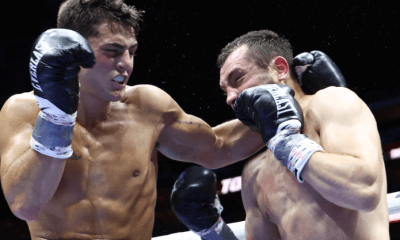
 Featured Articles3 weeks ago
Featured Articles3 weeks agoVito Mielnicki Jr Whitewashes Kamil Gardzielik Before the Home Folks in Newark
-
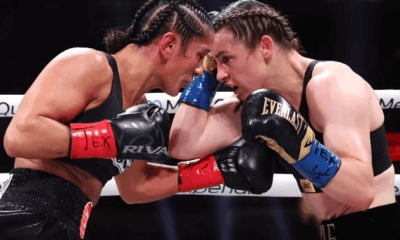
 Featured Articles3 days ago
Featured Articles3 days agoResults and Recaps from New York Where Taylor Edged Serrano Once Again
-
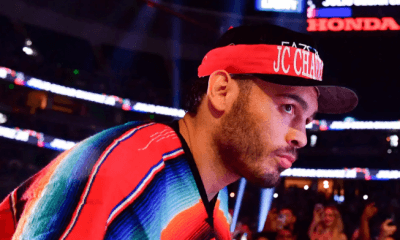
 Featured Articles1 week ago
Featured Articles1 week agoFrom a Sympathetic Figure to a Pariah: The Travails of Julio Cesar Chavez Jr
-
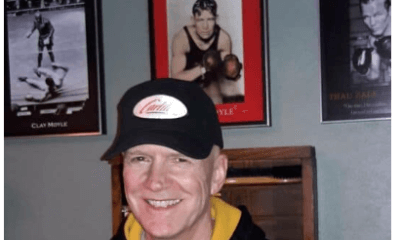
 Featured Articles4 weeks ago
Featured Articles4 weeks agoCatching Up with Clay Moyle Who Talks About His Massive Collection of Boxing Books
-
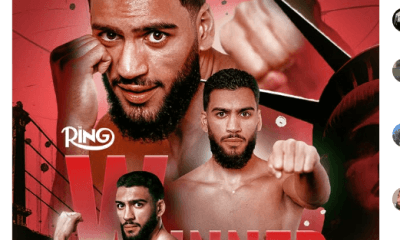
 Featured Articles2 days ago
Featured Articles2 days agoResults and Recaps from NYC where Hamzah Sheeraz was Spectacular
-
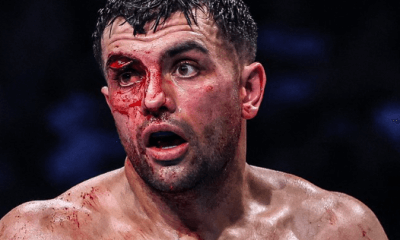
 Featured Articles1 week ago
Featured Articles1 week agoCatterall vs Eubank Ends Prematurely; Catterall Wins a Technical Decision
-
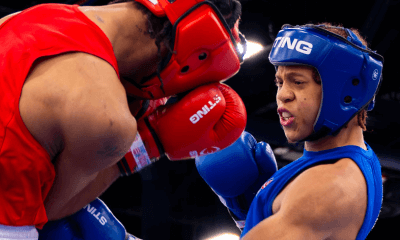
 Featured Articles3 weeks ago
Featured Articles3 weeks agoMore Medals for Hawaii’s Patricio Family at the USA Boxing Summer Festival
-
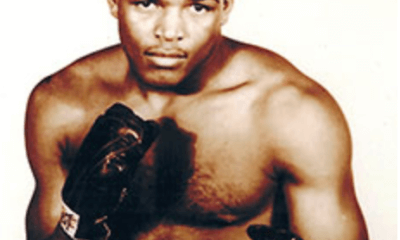
 Featured Articles3 days ago
Featured Articles3 days agoPhiladelphia Welterweight Gil Turner, a Phenom, Now Rests in an Unmarked Grave

